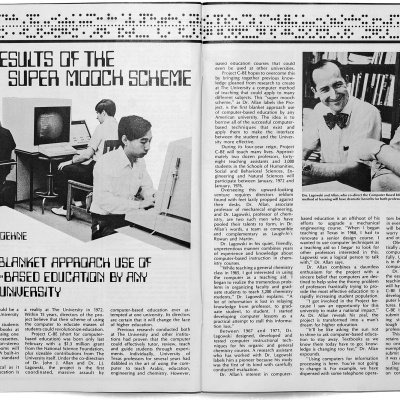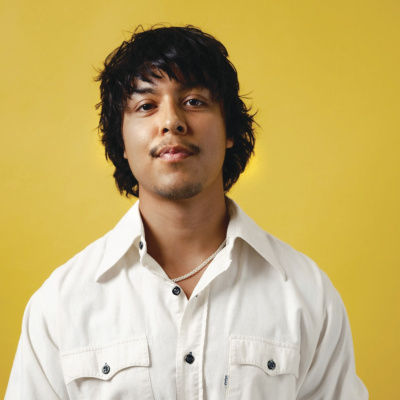Borges in Texas
The forgotten story of a literary giant who walked the Forty Acres.

A man walks into an enormous auditorium—seats filled, people crowding at the back. Blind, elegantly dressed, composed, he walks to the podium at the front. He is met with a 15-minute standing ovation.
He isn’t an actor, musician, or politician. He is the legendary Argentine writer Jorge Luis Borges, author of short stories, essays, and poems collected in such works as Ficciones, The Aleph, and Labyrinths; Nobel nominee and winner of international literary awards; and icon of magical realism who paved the way for writers like Gabriel García Márquez. The place is the Lyndon B. Johnson auditorium at the University of Texas. The year is 1975, and Borges is in Austin as a visiting professor. Swarms of young people have come to hear him speak about Don Quixote. The Q&A session that follows his talk goes on and on.
“No one left the auditorium,” recalls professor emeritus Lily Litvak. But that standing ovation is what continues to move her the most. “I’ve never seen anything like it.” Remarkably, the scene repeated itself in 1982, when Borges lectured again in the same room for an even bigger audience.
It’s strange to think of a writer holding such celebrity. Especially a difficult writer of labyrinthine literature, obsessed with libraries and strange books and the permeability of fantasy and reality.
For the average citizen, Borges’ name may not even ring a bell. Most of those who taught alongside him are retired or deceased. Aside from some archives at the Harry Ransom Center and a collection at the Benson Latin American Library, Borges has all but vanished from the university. But for some, the fact that one of the most acclaimed writers in history walked these courtyards and lectured in these rooms is a thing of awe.
A world where Borges is a celebrity, a world where Borges is a complete unknown: These are the kinds of contradictions Borges’ writing trafficked in. “Reality is a dream,” he insists in a tape of a long-forgotten 1968 lecture. “We, too, are dreams.”
In reality, the facts are these: Borges visited UT intermittently throughout the 1960s, 70s, and 80s, one of many leading intellectuals that the Department of Spanish and Portuguese brought in at the time.
Luis Ramos-Garcia took a class from Borges in 1969 and recalls that although the roster was limited to 20 students, Batts Hall overflowed with hundreds of fans. “To cope with the ‘problem,’ the dean and the chair moved the class to the Undergraduate Library auditorium, and that was not even enough,” he says.
Ramos-Garcia, who now teaches at the University of Minnesota, is stirred by these recollections. “Strangely enough, when I think of Borges I immediately think about UT and vice versa.”
Borges thought of himself as a Texan, too. In one of his later poems, “La Fama,” he refers to himself as a citizen of Austin: “Ser ciudadano de Ginebra, de Montevideo, de Austin y (como todos los hombres) de Roma.”
He loved picnicking at the Capitol with other professors. Marta Lujan, a fellow Argentine and a young professor at the time, remembers how enchanted he was with the building and its history. With one arm looped through Lujan’s and the other supported by a cane, he would touch the walls of the building and comment on its features.
“He was in particular much taken with the details of the engravings on the ground in the round floor under the dome, and explained to me why the five shields of different nations were represented there and the role they had played in Texas history,” Lujan recalls.
After their trip to the Capitol, Lujan took Borges to the Night Hawk Cafe (once on the Drag, now gone), where he liked to spend time with faculty. “The conversations were incredible,” remembers Litvak. “Borges was ironic, full of intelligence and anecdotes. It was a ball.”
The story of Borges’ presence on campus has passed many by like an unseen planet. But if you ask Litvak if memories of Borges at UT will soon be lost completely, she smiles.
“Lost? No. Borges will always be.”
Photo courtesy the Benson Latin American Collection.






